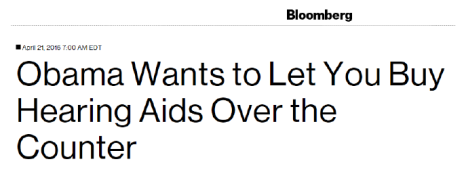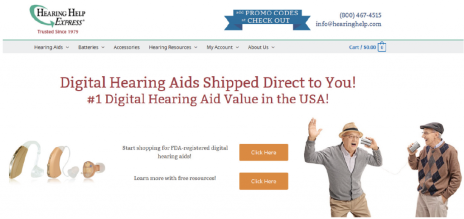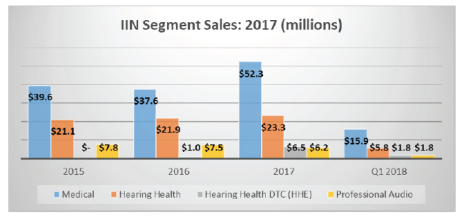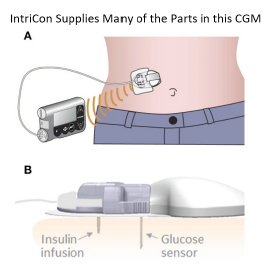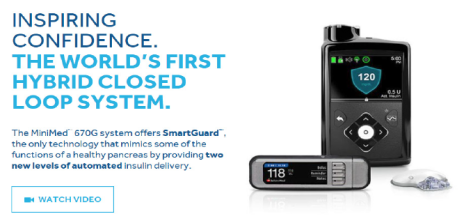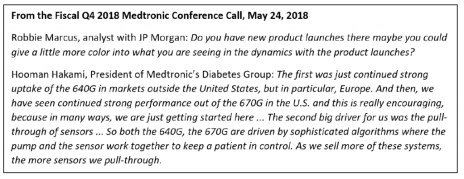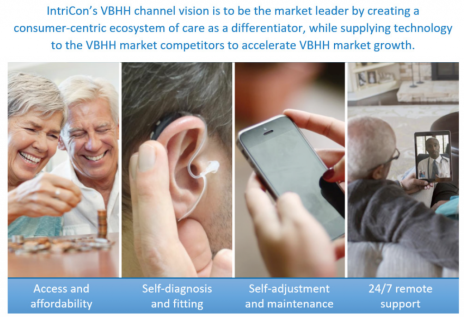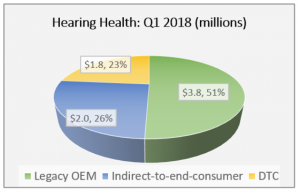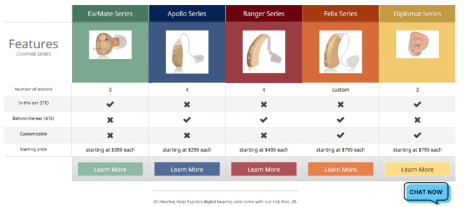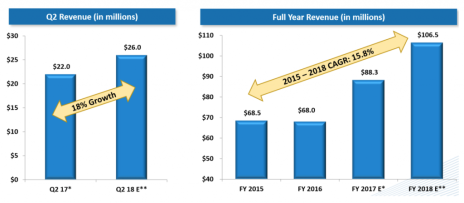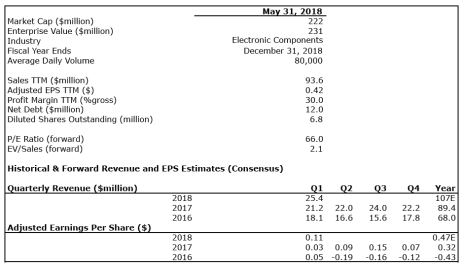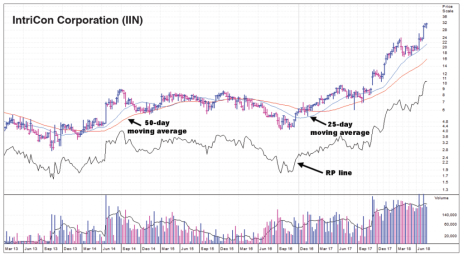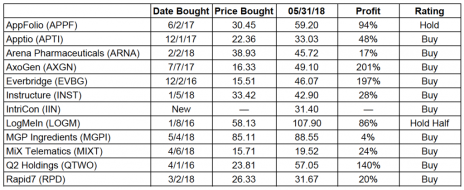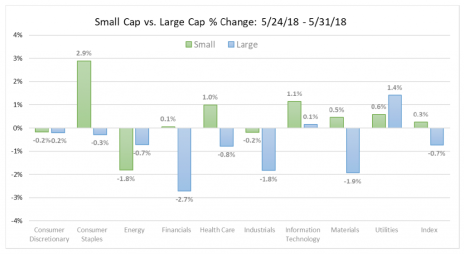While thinking about how to frame this month’s small-cap opportunity I was hit by the memory of a Ted Talk I heard last winter. The talk features organizational psychologist Adam Grant describing what he calls “originals”—thinkers who dream up new ideas and then do what it takes to put them into action.
Cabot Small Cap Confidential 229
[premium_html_toc post_id="151056"]
THE BIG IDEA
Warby Parker launched in 2010 selling eyeglasses online. With prices starting at just $95, its glasses have always been a lot less expensive than many alternatives out there, especially for buyers used to going through traditional eyeglass channels.
The business came about when its founders, Neil Blumenthal and Dave Gilboa, recognized that the eyewear industry was ripe for disruption. A few companies had been able to keep eyeglass prices way too high for way too long because consumers had few options. If your eyes were bad, you had to go get them checked, get a prescription, get fitted, then buy a pair of glasses from a store at a jacked-up price.
While they didn’t have all the pieces together from the get-go, and they weren’t the only ones that realized glasses could be sold online (Coastal Contacts was just one example who had been doing it for years), Neil and Dave recognized the market opportunity, and went for it.
To say Warby Parker has been a huge success and helped turn the eyeglasses market on its head is a massive understatement. Just a couple months ago the company was valued at $1.75 billion!
A couple things have helped Warby Parker succeed. First, the market was more than ready for change. And second, the company has relentlessly pursued exceptional customer experiences. This is critical when trying to get consumers to buy things online, like glasses, that need to both offer form and function specific to an individual’s tastes. The recent launch of its online Prescription Check telehealth service ($40) is likely to break down another major barrier to buying glasses online.
What does Warby Parker’s history of disrupting the eyeglasses industry have to do with today’s stock?
It’s embarking on a similar path in another industry that’s ripe for disruption. I’m talking about the hearing aid industry, which has been so ready for change it’s hard to believe it’s taken this long.
Just here in the U.S., roughly 38 million people suffer from some hearing loss, mostly because they are getting older or have been around a lot of noise. But even though hearing aids can help over 90% of them hear better, only 20% of people with hearing loss use them! This is about half the rate of hearing aid use in many other countries.
That’s insane—as are the reasons so many people with impaired hearing in the U.S. are wandering about, just whistling to the sounds of silence.
Either, (1) they haven’t been able to figure out where and how to get hearing aids, or (2) they realized they can’t afford the average price tag of $2,400 per hearing aid.
Finally, it appears the hearing aid industry is about to change as market forces are pushing the industry past the tipping point.
What are the drivers? Consumer backlash at the irrationality of pricing dynamics is one catalyst.
Technology, such as online fitting, is also getting to the point where it can help consumers circumvent the oligopoly that has been overcharging for hearing aids for too long. And finally, the FDA and the White House have stepped up to create legislation designed to help improve access to hearing aids, especially for the millions of people with just mild-to-moderate hearing loss.
This last point is a major driver. And it came about because back in 2015 President Obama’s Council of Advisers on Science and Technology recommended the FDA approve an over-the-counter (OTC) hearing device, which would be similar in concept to the reading glasses you can buy at drugstores.
Then in 2016, the FDA flagged data from the National Institute on Deafness and Other Communication Disorders that showed only 30% of adults over 70, and 16% of those aged 20 to 69, who could hear better with hearing aids used them.
Based on those numbers the FDA moved forward to figure out ways in which regulation could help drive deeper use of hearing aids. There were three key developments.
First, on December 2016 the FDA said it would no longer enforce the requirement that individuals 18 and older receive a medical evaluation, or sign a waiver, prior to buying most hearing aids.
Then on August 18, 2017 President Trump signed into law H.R. 2430, the U.S. FDA Reauthorization Act, which included H.R. 1652, the Over-the-Counter (OTC) Hearing Aid Act of 2017.
This legislation gives the FDA three years to create and regulate a category of OTC hearing aids that meet the same high standards for safety, consumer labeling and manufacturing protection that hold for all other medical devices. The OTC Hearing Aid Act also mandates that the FDA establish an OTC hearing aid category for adults with mild-to-moderate hearing loss, and states that these people can access OTC hearing aids without being seen by a hearing care professional.
While the FDA technically has up to three years to finalize the rules, then 180 days after the close of a comment period to polish them up, industry analysts seem to think it can provide the necessary details in 2018.
This legislation has potentially huge implications for the hearing aid market. Early analysis suggests that if market penetration in the U.S rises to the 40% level in other countries where hearing aid costs are much lower, the OTC hearing aid market in the U.S. could be worth around $360 million annually.
While nothing is set in stone just yet, one little company based in Minnesota is ready to pounce. Fortunately for investors, its future isn’t 100% reliant on legislation, or the still uncertain outcomes as the hearing aid market enters a period of intense disruption.
Rather, this company is making good money selling wearable devices into rapid growth medical markets, including blood glucose monitors (BGMs). But hearing aids make up around a third of its business, and online sales have already begun to climb.
THE COMPANY/PRODUCT
IntriCon (IIN) is a $218 million market cap company that designs and manufactures body-worn devices for the hearing, bio-telemetry and professional audio communications markets. Much of the current excitement around the company is due to growth potential in the rapidly evolving hearing aid market.
That’s because the global hearing aid market is estimated to be worth around $8.4 billion and growing at 4% to 5% annually. As it’s disrupted, significant business opportunities are opening up, most notably in the U.S. over-the-counter hearing aid market, which is worth roughly $360 million a year. IntriCon is investing heavily here, and while direct-to-consumer (DTC) sales through its website, Hearing Health Express, are a relatively small slice of total sales, they surged by over 500% in 2017!
But truth be told, the bulk of IntriCon’s current growth is the result of booming sales of continuous blood glucose monitoring (CGM) systems, which it supplies to medical device giant Medtronic (MDT). Medtronic is a major player in the diabetes market, from which it generated over $600 million in revenue in just the most recent quarter.
The company can be broken down into three main markets: Medical (primarily CGM systems and accessories), Hearing Health (hearing aid components sold to original equipment manufacturers (OEMs) and DTC through online channels), and Professional Audio Devices (mostly to emergency response and performing arts end markets).
In 2017, medical device sales generated 59% of revenue, while 34% came from selling hearing aids and 7% came from sales of professional audio devices.
The bulk of the company’s revenue (80%) comes from within the U.S. That said, both Europe and Asia represent meaningful markets, making up a combined 20% of 2017 revenue. IntriCon has developed relationships with major players in its biggest markets, including Medtronic and Smiths Medical in the Medical division, and UnitedHealth Group, Eargo, and MDHearingAid in its Hearing Health division.
Let’s talk more about IntriCon’s different businesses.
Business Segments
Beginning in the first quarter of 2018 IntriCon began reporting financial results for four end markets: Medical, Hearing Health, Hearing Health Direct-to-Consumer (DTC), and Professional Audio Communications. The Hearing Health DTC market represents online sales through IntriCon’s Hearing Health Express (HHE) website. By breaking out the hearing aid business into two channels, management is giving investors more insight into the hearing aid business. The chart below shows the sales trend and relative size of each of these end markets over the last three years, as well as in Q1 2018.
Segment #1: Medical
IntriCon’s Medical business is its biggest and fastest growing segment. It generated 59% of total revenue in 2017 and grew by 39%, to $52.3 million. In Q1 2018, revenue was up another 31%.
A major trend in the medical industry is toward wireless, low-power diagnostic continuous monitoring devices that keep people healthy and reduce costs by shifting the point of care out of the hospital and into the home (or anywhere else a person happens to go).
IntriCon serves this market with solutions that help OEMs make smaller, lighter and more efficient wearable devices. OEM customers purchase IntriCon’s microelectronics, micro-mechanical assemblies, high-precision injection-molded plastic components, and even complete bio-telemetry devices. While it has exposure to the cardiac, catheter positioning and drug delivery markets (mainly to Smiths Medical and Hospira), IntriCon’s biggest business is serving the diabetes market through its partnership with Medtronic.
This partnership with Medtronic is a big deal. Medtronic is one of the biggest medical technology companies in the world and just generated over $645 million in quarterly revenue from its Diabetes Group, which also happens to be its fastest growing division (Q4 sales were up 26%).
IntriCon is a major beneficiary of Medtronic’s growth in diabetes right now, and for the foreseeable future. It is the sole source provider and manufacturer of Medtronic’s MiniMed REAL-Time Transmitter products. IntriCon also provides various continuous glucose monitoring (CGM) system accessories.
IntriCon was designed into Medtronic’s MiniMed 630G system, and its MiniMed 670G system, both of which were approved by the FDA in 2016. The MiniMed 670G is particularly noteworthy. The system launched in the U.S. in the middle of 2017 is the world’s first hybrid closed loop insulin delivery system for type 1 diabetes and is the only insulin pump approved by the FDA that enables personalized and automated delivery of basal insulin.
Another win for Medtronic, and likely for IntriCon, was the March 2018 FDA approval of Guardian Connect, Medtronic’s first standalone smart CGM system for people on insulin injections.
With market forces working in its favor, Medtronic is pushing to grow its diabetes business, which is on track to deliver annual growth in the mid-teens over the next five years. CGM systems and sensors from IntriCon are key drivers of this growth.
To put things in context, IntriCon’s revenue from Medtronic grew by 58% in 2017 and by 43% in Q1 2018. Business is so good that IntriCon recently decided to expand its manufacturing footprint by 37,000 square feet to accommodate molding capacity and robotic assembly of medical components and systems, including sensors. It’s going to be very interesting to see what other opportunities this expanded capacity opens.
Segment #2: Hearing Health
IntriCon’s Hearing Health business sells through three distribution channels: (1) traditional OEMs, (2) direct-to-consumer (DTC) through IntriCon’s HHE website, and (3) indirect-to-end-consumer (ITEC), which are sales made to other companies that then sell DTC through their own websites.
The big picture trend is that sales into the OEM channel have been in decline while sales in the DTC and ITEC channels are on the rise and should more than offset declines in the OEM channel over the coming years.
Because the key to deeper market penetration is to lower prices for consumers, IntriCon refers to the channels that sell directly to consumers (DTC and ITEC) as its Value Based Hearing Health (VBHH) channel.
All in, the Hearing Health business generated 34% of 2017 revenue and grew by 30%, mostly due to sales in the DTC and ITEC distribution channels (i.e. the VBHH channel). Collectively, these two channels generated $6.5 million in revenue last year (7% of total revenue), which represented a small slice of the total pie. That said, they are growing rapidly. In the first quarter of 2018 DTC and ITEC channel sales were up by a combined 57%.
Let’s talk about each of these distribution channels separately.
Hearing Health – Traditional
IntriCon’s traditional hearing aid channel supplies components and systems to OEMs for use in finished products sold under their own brand names. In other words, IntriCon is like a company that supplies smartphone components to Apple for use in iPhones. Sales through this channel brought in 50% of Hearing Health revenue in Q1 2018, which represented a decline of 27% (to $3.8 million). On the conference call, management said they see quarterly OEM sales plateauing at around $2 million to $2.5 million per quarter by the end of 2019. Because there are more middlemen in this channel gross margins are the lowest in the Hearing Health segment, at around 35%.
Hearing Health – Indirect-to-end-Consumer (ITEC)
Through the ITEC channel IntriCon sells hearing aid components and systems to other companies that sell directly to consumers. Sales in this channel made up 26% of total Hearing Health revenue in Q1 2018, when they grew by 103% to reach nearly $2 million.
You might wonder: why has management decided to support the competition when it has its own DTC channel? CEO and President, Mark Gorder, speaking on the Q1 2018 conference call, answered this question for us, saying, “We think that’s in our best interest because we can grow the pie faster by not only supplying ourselves but supplying them in a way that doesn’t hurt our efforts in the direct-to-consumer channel.”
IntriCon’s biggest customers in this channel include Hi HealthInnovations (owned by UnitedHealth), MDHearingAid, Eargo, and firstSTREET, which sells a Personal Sound Amplification Product (PSAP) device. IntriCon supplies 100% of hearing aids sold to these partners, with the exception of MDHearingAid, to whom it supplies roughly 60% of hearing aids. Through the Hi Health partnership IntriCon supplies hearing aids to participants in UnitedHealth’s insurance plans, and this has been a significant driver in the ITEC channel.
While IntriCon’s efforts to grow beyond the traditional hearing aid market are in the early innings, the evidence to date suggests it’s making the right call by not turning its back on any markets. As people shift away from the traditional channel, they are looking at alternatives, and there are many players out there besides IntriCon. By forming strategic partnerships with other DTC sellers, insurers and players in the PSAP channel, IntriCon can grab more growth than it can capture on its own.
Hearing Health Direct-to-Consumer (DTC)
IntriCon has also been acquiring assets to build out its DTC channel, which came into existence in the fourth quarter of 2016 when it acquired a 20% stake in the troubled company Hearing Help Express (HHE), a DTC mail order hearing aid provider, for $693,000.
The HHE acquisition resulted in $1 million in DTC sales in 2016. Then in December 2017, IntriCon acquired the remining 80% of HHE (out of bankruptcy) for $650,000 in cash, repayment of $1.8 million in HHE’s debt, and an earn-out. With most of 2017 already over prior to the acquisition, IntriCon recognized $6.5 million in revenue from HHE, and a $324,000 loss.
We don’t yet have enough evidence to know if this really was an opportunistic purchase, or not. But I’m very bullish on HHE’s potential. That said, there is a lot to be done to improve the HHE website and customer experience, as well as integrate the acquisition, build out the sales team and forge strategic relationships. Sales have been going up, but so have returns. In Q1 2018, DTC revenue was up 26% and the company hired six inside sales reps. IntriCon is doing a lot of testing to figure out how best to ramp up staff in the call center and how to target add spend. Look for this business to ramp up in the fourth quarter.
Segment #3: Professional Audio Communications
IntriCon’s Professional Audio Communications business is relatively small at just 7% of total revenue. In 2017 sales were down 18% to $6.2 million, but they came roaring back in Q1 2018 as growth topped 32%. Devices sold into this market are small, portable and able to improve hearing performance despite noisy and challenging listening environments. They are primarily used in emergency response markets (fire, law enforcement, safety, aviation and military). Additionally, certain of IntriCon’s miniature ear and head-worn devices are used by performers and support staff in the music and stage performance markets.
Given the specialized use cases this is a small portion of IntriCon’s overall business, but the company is still well-positioned to pursue growth opportunities given that much of the underlying technology is shared with the hearing health and medical segments, and that there are growth opportunities out there as the OTC hearing health and Personal Sound Amplification Products (PSAP) market evolves.
Technology
As with any medical device, the underlying technology is a critical part of the story. IntriCon’s devices feature three core technologies:
Ultra-Low Power Digital Signal Processing (ULP DSP): This turns the sounds we hear in the real world into a digital format that can be amplified for a variety of audio applications. IntriCon uses a proprietary nanoDSP signal processing that combines ultra-miniature hardware and signal processing algorithms in its extremely small devices.
Ultra-Low Power (ULP) Wireless: ULP Wireless is becoming a required technology in body-worn medical devices to enable transmission of body-related data to datacenters and caregivers. It’s critical in both the diabetes monitoring and hearing aid markets. Physiolink3 is a particularly exciting evolution of the company’s ULP wireless technology and is close to being integrated into all end market solutions. Physiolink3 is based on 2.4GHz proprietary digital radio protocol and works for distances up to 10 feet. It will help in myriad use cases, including remote cloud-based fitting, and consumer directed self-fitting of hearing aids. A major convenience is that users will be able to stream audio directly into their hearing aids.
Fitting Software: Efficient and accurate hearing aid fitting represents a huge barrier to growth in the DTC distribution channel since there are a lot of device options out there, every ear is different, and a proper fit can make the difference between an extremely satisfied or an extremely unhappy patient! To drive greater adoption IntriCon is investing in various advanced fitting software, including Soundperience (discussed below).
Soundperience – The Key to Unlocking the $360 Million OTC Hearing Aid Market
In 2017 IntriCon entered into an agreement to acquire an equity stake in Soundperience, a German-based company specializing in self-fitting hearing aid technology and brain training software. The company’s initial stake was 16%, then went up to 49% in January 2018. The total investment to date is $1.8 million.
The strategy behind this investment is to develop industry leading self-fitting hearing aid software. Just as good customer experience and proper fit were key to Warby Parker’s success selling eye glasses online, IntriCon’s management believes self-fitting technology is a critical step to selling lots of hearing aids online.
Soundperience sounds legit. The company designed the first psycho-acoustic method of analyzing peripheral hearing and central hearing processing, which is branded as the Sentibo Smart Brain System. Sentibo is currently marketed in the German market as Signison, a 50-50 joint venture managed by IntriCon’s managing director Henning Schmidt and Soundperience’s founder, Andreas Perscheid.
Phase 1 of the system is an innovate app that analyzes a patient’s peripheral and central hearing performance. With the use of an iPad a trained expert can complete this analysis in a few minutes, after which a patient’s hearing profile is created. That profile is used to configure two Sentibo Twins, in-ear devices designed for the Sentibo System.
Phase 2 includes around four weeks of coordinated, regular stimulation (active listening) and relaxation (resting) sequences. The process is managed by an expert and with the help of the Twins it re-establishes the link between peripheral and central listening.
The key here is the technology underlying Phase 1 because this is how a hearing-impaired person sitting at their computer at home can find out just how bad their hearing is. IntriCon says its Signison technology is being expanded to include online hearing aid tests and can be used to accelerate growth of DTC sales. In terms of making IntriCon stand out from the competition, a sophisticated and accurate online test that properly analyzes a person’s hearing, then identifies the proper hearing aid just for them, could be huge. We’ll have to see how it goes, but according to management, this technology should be integrated into the Hearing Health Express website this year.
The Business Model
IntriCon is a manufacturer, supplier and retailer of medical devices and hearing health products, depending on the end product sold and the distribution channel sold through. The proportion of sales mix from different products and channels has a big impact on overall gross margins since profit margins are very different across the company. For instance, in the Hearing Health business sales to OEMs carry a profit margin of around 35%, whereas DTEC sales made through the Hearing Health Express website carry gross margins closer to 74%. In aggregate, company-wide gross margin is in the low 30% range and has been improving as IntriCon gains scale.
Internal sales forces are responsible for the bulk of hearing device products sold to OEMs, distributors and through partnerships, as well as sales of medical and professional audio communications products. After the Hearing Health Express acquisition, IntriCon began selling directly to consumers through its website, direct mail, and a call center.
The Bottom Line
In 2017 IntriCon grew revenue by 31% to $89 million and EPS by 174% to $0.32 (from -$0.43). The fastest growing segments were Medical (because of Medtronic), up 39%, and Hearing Health Direct-to-Consumer (because of the HHE acquisition), up 533%.
In Q1 2018 (reported on May 7) revenue was up 20% to a record $25.4 million, and EPS increased to $0.10 from a loss of -$0.04. The main growth drivers were the same as in 2017. Sales of wireless continuous glucose monitoring (CGM) systems to IntriCon’s largest customer, Medtronic, drove Medical segment revenue up by 31%. While overall sales in the Hearing Health business were flat due to expected declines in sales to OEMs, growth in the DTC channel were up 26%, and sales in the DTEC channel were up 103%.
Management gave guidance for both the second quarter of 2018 as well as the full year. For Q2, it sees revenue of $25.5 to $26.5 million, implying growth of 16% to 21%, and for full-year 2018 it sees revenue of $105 to $108 million, implying growth of 17% to 21%. No EPS guidance was given, but consensus estimates (for what they’re worth on a stock this small) suggest EPS growth of 34% to $0.47 in 2018. Where the actual number comes in will depend on the revenue mix and how much IntriCon is able to grow hearing aid sales in the higher-margin DTC channel.
RISK
No Guarantees in OTC Market: Market disruptions can create opportunities, but that doesn’t mean market incumbents are sitting on their butts. Or that disruption will come overnight (rarely the case). The big players in the hearing aid industry are plenty motivated to go after the OTC hearing aid market too.
Big Box Stores, Tech Companies and Online Retailers Represent Potential Threats: Big retailers like Costco have been able to grab a significant share of hearing aid sales by capturing patients when they come in to shop for other items. Also, big consumer electronics companies like Apple, Samsung and Bose could decide to jump into the OTC hearing aid market. And finally, online giants like Amazon could make a push into the category. All represent potential threats, and opportunities, to IntriCon.
High Reliance on Medtronic: In 2017 and 2016 IntriCon derived 48% and 40%, respectively, of revenue from Medtronic. The next four largest customers made up an additional 14% of revenue in 2017, meaning 63% of revenue came from IntriCon’s five biggest clients.
High Rate of Returns in DTC Hearing Health Channel: High rates of returns are somewhat normal in the DTC hearing aid market given challenges with fitting devices. On the one hand this means opportunity as technology, such as that from Soundperience, should help reduce return rates. But on the other hand, consumers need to understand that they are part of the problem, and they need to provide the correct information to get what they need. If technology can’t improve device fitting, sales in the DTC channel could face structural challenges.
Secondary Offering Could Dilute Shareholders: IntriCon management recently filed a shelf registration to give the company the option to sell up to 30 million shares. This replaces a shelf registration that recently expired, and the company is profitable, so there’s no apparent specific need to raise capital. But at the same time, investors shouldn’t be surprised if IntriCon does so to help fund growth initiatives.
COMPETITION
As a manufacturer and supplier of medical device components, and a retailer of fully-assembled devices, IntriCon competes with a lot of players. In the diabetes market, the company competes with Medtronic, Senseonics (SENS) and Insulet (PODD). In the hearing aid manufacturer market IntriCon competes with Sonova, William Demant, GN Store Nord, Sivantos, Starkey and Widex. In the retail market it competes with Costco, Amazon, AudioNova, MDHearingAid, Eargo and firstSTREET, along with a growing list of optical retailers that are expanding into hearing aids, including EssilorLuxottica, Fielmann, Specsavers, LensCrafters, Pearle Vision, Sears Optical and Target Optical, among others. In terms of self-fitting hearing aid technology, Audyx and Bose (through its Hearphones and 2016 trademarking of an EarMachine app) represent potential threats to IntriCon’s Soundperience JV.
THE STOCK
Trading Volume: IntriCon has a market cap of $218 million and trades an average of 80,000 shares daily. That means roughly $2.5 million worth of stock trades each day. Our subscriber group shouldn’t move this stock. Low volume days are around 50,000 shares, while high volume days are 300,000 to 400,000 shares.
Historical Price: IIN has been trading for over two decades and while shares have been up and down at times they’ve never gone on a sustained rally. That began to change in 2017 after the company divested its cardiac monitoring business, financial results improved, and opportunities in the hearing aid market began to show promise. In September, shortly after President Trump signed the OTC Hearing Aid Act into law, IIN jumped higher, then the stock broke out and rallied to new highs near 25 after the November Q3 2017 earnings report. Action cooled off in January when a normal-looking pullback and consolidation period occurred in the 16 to 20 range. A mid-April rally carried the stock back near its recent high, then the Q1 2018 earnings report on May 7 drove a new wave of buying and pushed shares up near $30.
Valuation and Projected Price Target: Shares of IIN trade at 66 times expected 2018 EPS (of $0.47) and with a 2018 enterprise-value-to-sales ratio (EV/Sales) of around 2.1. Direct comparisons are difficult since the company sells through multiple distribution channels and into three markets with very different dynamics. But for points of comparison, Medtronic (MDT), AxoGen (AXGN) and LeMaitre Vascular (LMAT) trade with 2018 EV/Sales ratios of 15.3, 6.9 and 4.3, respectively. Medtronic is a large-cap medical device stock expected to grow revenue by 3.2% this year, whereas AxoGen and LeMaitre are both small caps, and are expected to grow revenue by 40% and 7%, respectively. Comparatively, IntriCon’s 2018 EV/Sales ratio of just 2.1 looks cheap. With the caveat that valuation and target prices for a stock like this are temporary guesses, at best, let’s assume that within the next 18 months IIN can trade with a valuation on par with LeMaitre, which implies a doubling of the shares price and, therefore, a price target of around $60.
Buy Range (next two months): My wide buy range is between 25 and 35, which gives us 20% to the downside (near the support zone from late April) and roughly 12% to the upside. That said, assuming the growth story remains intact and there are no significant pullbacks in the near future, I doubt the stock will get down into the mid-20s. Therefore, in the near term look to accumulate shares in the 28 to 35 range. The low end of this range is about where the stock rallied to after the Q1 2018 report. There should be some support there if the stock softens in the coming weeks.
The Next Event: Management announced Q1 2018 results in early May and presented at the B. Riley FBR Investor Conference on May 24. Second-quarter results aren’t expected until August. In the meantime, we might get updates on technology development, distribution and manufacturing expansion, but there is no set date for anything.
IntriCon Corporation (IIN) Financials
IntriCon Corporation (IIN) |
UPDATES ON CURRENT RECOMMENDATIONS
Due to the nature of the stocks recommended, it is to your advantage not to share these recommendations.
Buy means accumulate shares at or around the current price.
Hold means just that; hold what you have. Don’t buy, or sell, shares.
Sell means the original reasons for buying the stock no longer apply, and I recommend exiting the position.
Sell a Half means it’s time to take partial profits. Sell half (or whatever portion feels right to you) to lock in a gain, and hold on to the rest until another ratings change is issued.
Small caps continued to lead the market this week as the S&P 600 Small Cap Index toyed with a breakout to fresh highs …
… and small stocks led large caps by a 1% differential, mostly due to outperformance in the consumer staples, health care and information technology sectors.
Earnings season is effectively over and we’re now in the middle of the conference circuit. Management teams from most of our portfolio holdings are making the rounds to pitch their companies to institutional investors, but with earnings reports having come out so recently there is little new information being divulged. It’s a good time to revisit out initial thesis with each position, and in that spirit I’ve been listening to as many webcasts as I have time for. With no exceptions (so far), I continue to feel bullish about the growth potential of all our stocks!
Generally speaking the stock market is doing well, second-quarter earnings were good and economic growth looks solid moving forward. Along with deregulation and tax cuts, these factors have led many investment banks to overweight small caps, which could be leading to some trickle-down strength in our stocks, many of which are trading near 52-week highs.
Same as last week, I’m keeping most stocks at buy, but recommend averaging in with smaller position sizes at current levels. We could easily see some pullbacks as we head into the summer months and I’d prefer that you have some cash on the sidelines to put to work if and when that happens. I’m not saying a market retreat is imminent, just that with things going so well at the moment it’s wise to remember that stocks do actually go down sometimes!
Updates
AppFolio (APPF) responded to my move to “hold” last week by promptly rising to an all-time high this week! Still, with a big move in April and May it seems appropriate to be a little conservative with the property management software stock right now. Keep holding. HOLD.
Apptio (APTI) is also trading near all-time highs, which isn’t a surprise given how the Technology Business Management (TBM) software specialist has been executing in recent quarters. As I stated last week, if you think powerful software that helps large organizations manage their technology spend – which is already a huge dollar amount and is exceptionally strategic in nature – is important, then you should like Apptio. Management will give investors two more opportunities to hear the pitch in June when representatives speak at the Bank of America Merrill Lunch Global Tech Conference in San Francisco (June 5) and the Nasdaq 38th Investor Conference in London (June 12). I like the company, and the stock still looks buyable. BUY.
Arena Pharmaceuticals (ARNA) has been turning heads lately as a couple analysts recently picked up coverage with buy ratings. The company has been on the road at conferences and from what I’ve heard has set a confident tone. There’s nothing major to report today but over the coming months we’ll be hearing more about the initiation of Phase 3 trials for both Etrasimod and Ralinepag, cardiopulmonary pipeline expansion, and an early data readout from the Phase 2 trial for olorinab. Shares were flat this week. BUY.
AxoGen (AXGN) is still climbing as the stock looks to be completely unfazed by the secondary offering at $41 from a few weeks back. It probably helps that management just announced some of the cash went to repaying all outstanding debt, which totaled $25 million. The repayment will save around $2.4 million in annual interest given that the debt’s interest rates of 9.7% and 6.2% were quite high. If AxoGen, which makes implantable devices for nerve repair, decides to tap the debt market again in the future, I suspect borrowing costs will be more favorable than they were in 2016 given how far the company has come. The stock has been rising steadily but I plan to keep at buy until the trend breaks. BUY.
Everbridge (EVBG) stepped 5% higher this week and closed yesterday just above its previous all-time high (set two weeks ago). Management from the critical communications software company will be speaking at several conferences in June and will hopefully give an update on how the integration of Unified Messaging Systems (UMS) is going. Mark your calendar. Everbridge is scheduled at the Bank of America Merrill Lunch conference on June 6, the Stifel 2018 Cross Sector Insight Conference on June 11, and the William Blair Annual Growth Stock Conference on June 12. The stock is modestly extended here at roughly 16.5% above its 50-day moving average line, but on any dips it’s still a buy. BUY.
Instructure (INST) climbed off its 50-day line this week and rose 2%, but we’re still in a consolidation phase given that the stock hasn’t broken out of the 40 to 44 trading range in two months. It’s a good time to be accumulating shares. Provided the growth story remains intact for the educational technology company the next earnings report should give more insight into market share gains in higher education as well as growth in the new corporate learning product, Bridge. The company is on track for 30% revenue growth this year. Keeping at buy. BUY.
LogMeIn (LOGM) is unchanged this week as the collaboration and unified communications company continues work on acquisition integration, product rationalization and sales strategy evolution. There’s nothing new to report, and the stock is still a hold. HOLD HALF.
MGP Ingredients (MGPI) is our whiskey-and-food ingredients stock and is unchanged this week, but up around 4% since I recommended it in early May. The stock is following its 50-day moving average line higher. Management will host an analyst day on June 7 at its Lawrenceburg, Indiana facility starting at around 9:30 a.m. EDT. The presentations will be webcast live, and available for playback through MGP’s Investor Relations website. A live audio webcast will be available on MGP’s Investor Relations website.
I had an opportunity to review the Neilsen U.S. spirits market data for the four weeks ending on May 19, and while the data isn’t a perfect match for what’s going on in MGP’s spirits business, it does give us a general idea about how the industry is faring. Neilsen said overall U.S. spirits volume and sales grew by 2.2% and 3.7%, respectively, which is in line with trends over the last three months. It also looks like brown spirits are doing well, most notably Diageo’s Bulleit (which MGP makes), which saw volume rise 13.6%. Since most of MGP’s whiskey goes to craft distillers it’s not like we can rely on Neilsen to tell us what’s going on, but it’s still interesting to take note of the big-picture trends (tequila is flying off the shelves!). BUY.
MiX Telematix (MIXT) is our South African-based provider of fleet management, driver safety, and vehicle tracking software solutions. The stock jumped soon after I added it in April but has been consolidating for the past three weeks after a big move in mid-May. Nothing has changed over the past week. As I said last Friday, the stock’s trend is powerful so I’m likely to keep at buy until we get a significant break below the 50-day line. BUY.
Q2 Holdings (QTWO) makes cloud-based virtual banking software and looks to be well positioned to keep growing as deregulation, rising interest rates and positive industry growth spur financial institutions to up spending on technology. The stock is unchanged from last week and is consolidating near all-time highs. You can continue to pick up a few shares. BUY.
Rapid7 (RPD) sells cybersecurity software and is in the final innings of transitioning to an all-subscription pricing model. A non-dillutive offering from existing shareholders cut an early-May rally short but is ultimately a good thing since it should modestly increase trading volume for the stock, which typically trades around 400,000 (around $1.2 million worth) shares daily. The company’s transition to subscriptions, coupled with the release of new cloud-based solutions and an expanded portfolio of products, portends good things for the future. It’s a buy. BUY.
Please email me at tyler@cabotwealth.com with any questions or comments about any of our stocks, or anything else on your mind.
Next Cabot Small-Cap Confidential issue is scheduled for July 6, 2018
Cabot Small-Cap Confidential is published by the Cabot Wealth Network, an independent publisher of investment advice. Neither the corporation nor its employees are compensated in any way by the companies whose stocks we recommend. Sources of information are believed to be reliable, but they are in no way guaranteed to be complete or without error. Recommendations, opinions or suggestions are given with the understanding that subscribers acting on information assume all risks involved. Copyright © 2018 - COPYING AND/OR ELECTRONIC TRANSMISSION OF THIS NEWSLETTER IS A VIOLATION OF THE U.S. COPYRIGHT LAW. For the protection of our subscribers, if copyright laws are violated by any subscriber, the subscription will be terminated.
[premium_html_footer]



